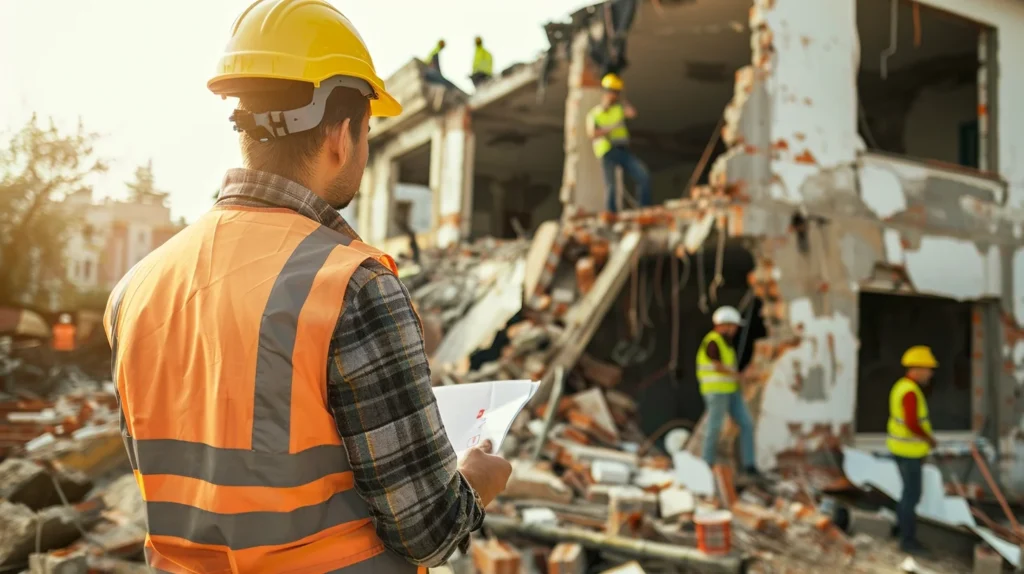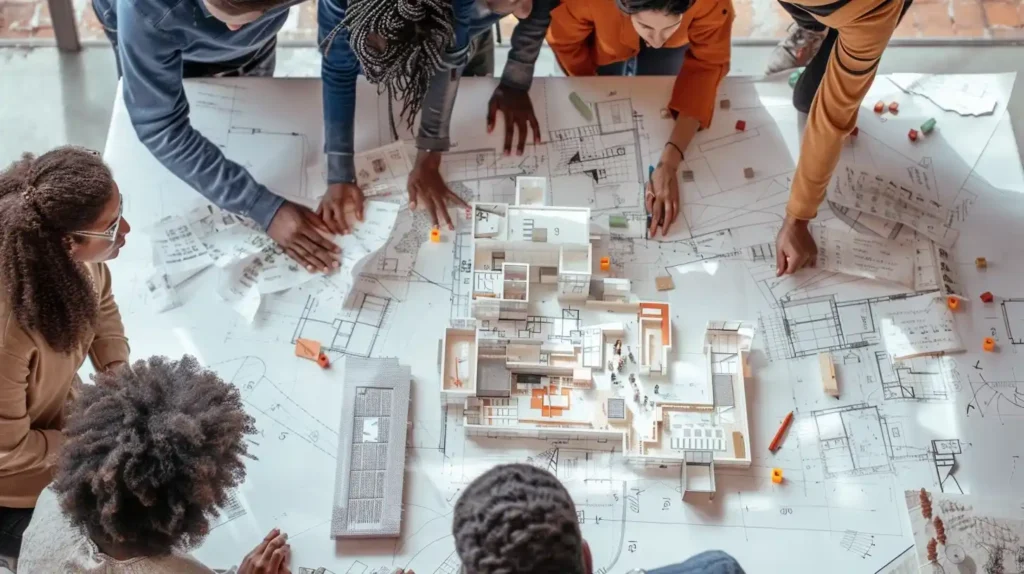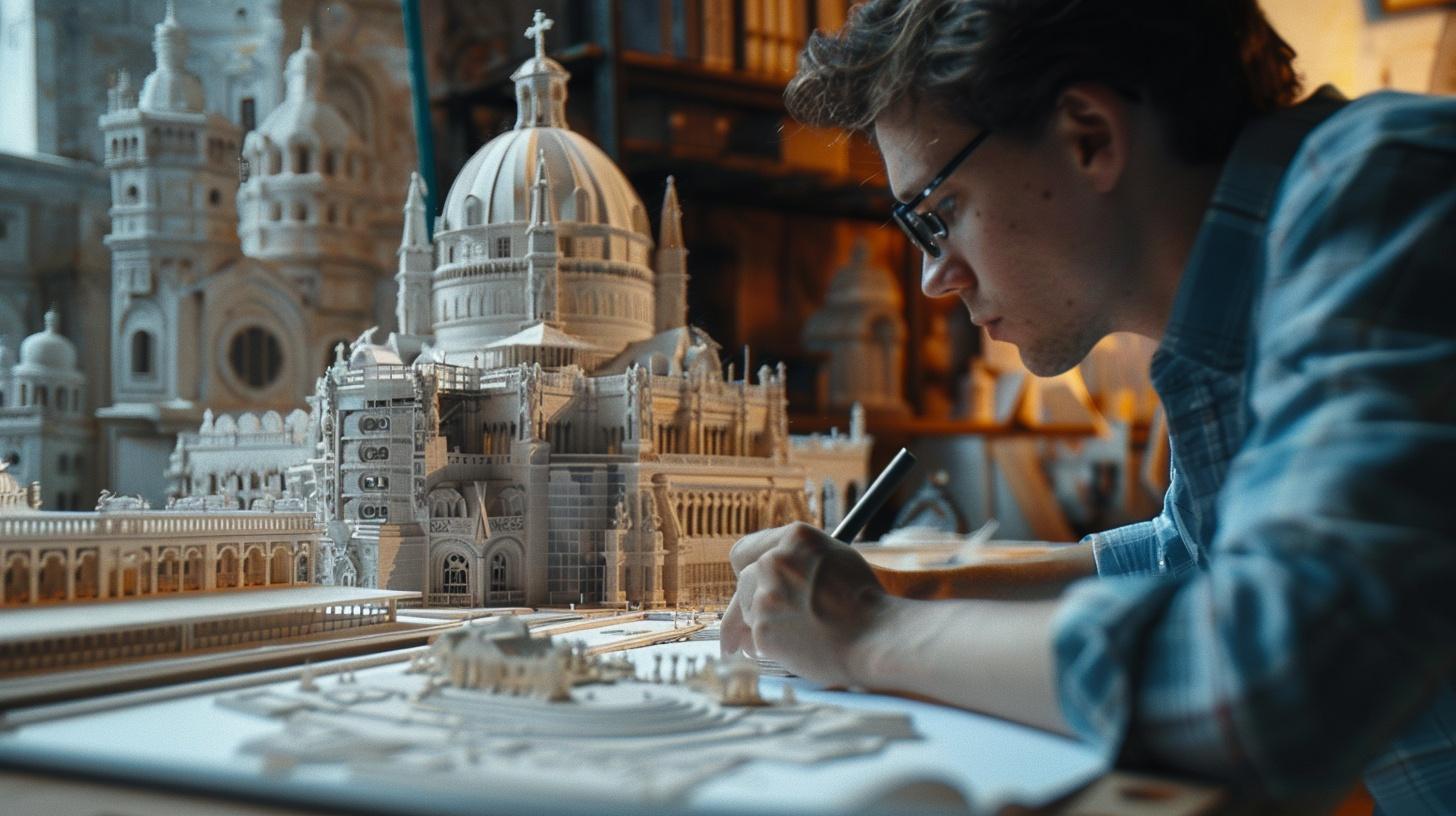
Role of Architects in Disaster Relief and Recovery Efforts

In times of crisis, architects emerge as unsung heroes, leveraging their expertise to aid in disaster relief and recovery efforts. But what exactly is their role, and how do they contribute to rebuilding communities shattered by natural or human-made disasters? Today, we’ll look at the pivotal role architects play in disaster management and recovery.
Our Unsung Heroes
Architects are integral to the creation of resilient structures capable of withstanding the most extreme events. Teaming up with engineers and specialists, they conduct thorough risk assessments and design solutions to mitigate potential hazards. Their keen eye for detail ensures that buildings are not just aesthetically pleasing but also structurally sound, offering a safe haven amidst chaos.

Latest
Other Topics
Architects Playing A Huge Role In Disaster Relief and Recovery Efforts
But it’s not just about designing buildings; architects also play a crucial role in disaster recovery planning. They manage the design, implementation, and communication of business continuity and disaster recovery plans, safeguarding the security and integrity of vital data and information systems. Their foresight ensures that organizations can bounce back swiftly from unforeseen disruptions, minimizing downtime and maximizing resilience.
Importance Of Resilient Infrastructure
To truly understand the significance of architects in disaster relief and recovery efforts, we must recognize the broader impact of infrastructure on resilience. Architectural interventions extend beyond individual structures to encompass entire communities. By designing infrastructure that remains operational during disasters, architects keep people, goods, and information flowing, ensuring swift and effective response and recovery efforts.
In the face of mounting environmental challenges, architects are at the forefront of creating sustainable and disaster-resilient communities. Their innovative technologies and materials pave the way for resilient construction methods, enhancing the durability of structures and the safety of inhabitants. Through collaboration with researchers and engineers, architects drive forward-thinking solutions that mitigate the impact of disasters and foster long-term resilience.
Loyal To The Communities They Serve
But perhaps most importantly, architects are advocates for the communities they serve. They listen to the needs of residents, engage stakeholders, and empower local populations to actively participate in the rebuilding process. By prioritizing inclusivity and community-driven initiatives, architects ensure that the voices of those most affected by disasters are heard and respected.
Architects’ Responsibilities In Disaster Management
Now, let’s take a closer look at the specific responsibilities of architects in disaster management and recovery. Architects wear many hats in times of crisis, each contributing to the overarching goal of rebuilding communities stronger and more resilient than before.
Thoroughly Assessing Damaged Buildings
One of the primary responsibilities of architects in disaster management is conducting thorough assessments of damaged structures. In the aftermath of a disaster, architects survey affected areas to evaluate the extent of damage to buildings and infrastructure. They assess structural integrity, identify safety hazards, and determine whether buildings are salvageable or require demolition and reconstruction.

Coming Up With Comprehensive Rebuilding Designs
Following these assessments, architects collaborate with engineers and construction teams to develop comprehensive rebuilding plans. They leverage their expertise in design and planning to create innovative solutions that address the unique challenges posed by disasters. From temporary shelters to permanent housing, architects strive to provide practical, cost-effective, and resilient housing options for displaced individuals and families.

Advocating For Sustainable and Resilient Buildings
In addition to designing physical structures, architects play a crucial role in advocating for sustainable and resilient building practices. They incorporate green building principles, such as energy efficiency and renewable materials, into their designs to minimize environmental impact and enhance long-term resilience. By prioritizing sustainability, architects ensure that communities recover from disasters and thrive in the face of future challenges.

Coordinating With Local Authorities and Government Agencies
Another key responsibility of architects in disaster management is coordinating with local authorities and government agencies. Architects work closely with emergency management teams to ensure that rebuilding efforts comply with building codes, zoning regulations, and safety standards. Architects streamline the recovery process by facilitating communication and collaboration between stakeholders and ensuring that resources are allocated efficiently.

Empowering The Community Through Engaging With Them
Furthermore, architects play a vital role in community engagement and empowerment. They host public meetings, workshops, and charrettes to solicit input from residents and gather feedback on proposed rebuilding plans. By involving local communities in the decision-making process, architects foster a sense of ownership and resilience, empowering residents to take an active role in shaping their future.

Architectural Steps Taken to Mitigate Damage From Natural Disasters
In the wake of increasing climate-related events and natural disasters, architects are pioneering innovative strategies to minimize damage and enhance resilience in built environments.
Implementation Of Durable Building Materials
One crucial aspect of disaster mitigation is the selection of durable building materials and construction techniques. Architects opt for resilient materials such as steel, reinforced concrete, and composite materials that can withstand the forces of earthquakes, hurricanes, floods, and other natural hazards.

Green Building Practices
Additionally, architects prioritize the adoption of sustainable design principles to enhance the resilience of buildings and communities. Green building practices, such as passive solar design, natural ventilation, and rainwater harvesting, not only reduce environmental impact but also improve the overall resilience of structures. By harnessing the power of nature and incorporating eco-friendly features into their designs, architects create buildings that are better equipped to withstand and recover from disasters.

Inventing Innovative Structural Engineering Techniques
Furthermore, architects employ innovative structural engineering techniques to enhance the resilience of buildings against specific hazards. Seismic retrofitting, for example, involves reinforcing existing structures to withstand earthquakes, while wind-resistant design features such as aerodynamic shapes and bracing systems help buildings withstand hurricane-force winds. By integrating these advanced engineering solutions into their designs, architects ensure that buildings are better equipped to withstand the forces of nature.

Disaster-Resilient Communities
Beyond individual buildings, architects play a pivotal role in designing disaster-resilient communities. By adopting a holistic approach to urban planning and design, architects create interconnected networks of resilient infrastructure, green spaces, and community amenities that enhance the overall resilience of neighborhoods and cities. Architects envision and implement solutions that promote safety, sustainability, and inclusivity from flood-resistant waterfront developments to climate-adaptive urban landscapes.

Advocating For Policies and Regulations That Prioritize Resilience
Moreover, architects advocate for policies and regulations that prioritize resilience and disaster mitigation at the local, national, and international levels. They collaborate with policymakers, advocacy groups, and community organizations to promote building codes, zoning ordinances, and land-use regulations that enhance resilience and reduce vulnerability to disasters. By leveraging their expertise and influence, architects drive positive change and foster a culture of resilience in the built environment.

Final Words
Architects play a multifaceted role in disaster relief and recovery efforts, from conducting damage assessments and designing resilient structures to advocating for sustainable policies and community engagement. By implementing innovative design solutions, adopting green building practices, and fostering collaboration, architects contribute to the creation of safer, more resilient built environments that withstand the test of time and nature.
If you’re ready to embark on your architectural planning journey and build a resilient future, contact Designs Boss today. Our team of experienced architects is here to guide you every step of the way, from initial concept to final construction. Together, let’s create a brighter, more resilient tomorrow.


